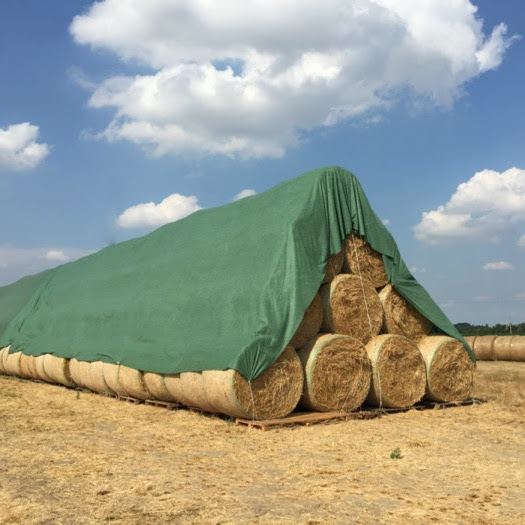Insulated tarps have become a necessity in many industries and applications, effectively protecting against extreme temperatures and negative environmental factors. The quality of such tarps is the result of careful material selection and creative design. Understanding the science behind insulated tarps will help users understand their function and make an informed decision when choosing the correct product.
Outer Material: The First Line of Defense
The outer layer of an insulating tarp is the first line of defense against the elements. Among the most commonly used materials, PVC tarpaulins stand out with their first-rate protective features. PVC is a synthetic material that has a number of benefits. It is highly abrasion-resistant, i.e., it can touch rough surfaces such as gravel, metal or concrete without getting easily hurt. It is because of this that PVC tarpaulins are so well suited to application on building construction sites, where tarps will inevitably catch on rough edges and are subject to constant abrasion.
In addition, PVC tarpaulins have good resistance to UV. Sunlight has a tendency to bleach most materials over a long period of time, which ultimately crack or degrade. PVC tarpaulins do not weaken when subjected to sunlight with stable long-term performance. Its water resistance is also significant. During damp weather conditions, it prevents moisture from seeping in, keeping the inner insulating core layer of the tarp and its insulating capability intact.
Insulated Core: Keeping Temperatures Stable
Underneath the outer layer is the insulating core layer, which is key to the thermal performance of an insulated tarp. Foam, fiberglass, and specialty synthetic fibers are common insulation materials. Foam insulation is light weight but extremely insulative and effective at keeping air in. Air is not a conductor of heat, and the trapped air within the foam is a barrier that prevents heat transfer. This makes foam insulated tarps perfect for staying warm in cold weather or cool in warm weather.
Fiberglass insulation is another favorite. It is made of extremely fine glass fibers spun into form and have good insulating quality, and they are also resistant to high temperatures without distorting their form. Fiberglass insulation can be used where there is a need for fire protection since it is not easily flammable. Synthetic specialty fibers have unique insulation properties designed to incorporate high-performance insulation and light weight. Special properties might be created on the fibers by engineering, e.g., being more flexible or more chemically resistant.
Design Features: Enhanced Functionality
The design of an insulated tarp also influences its overall performance. Reinforced edges are the norm and a key design feature. For added strength and installation convenience, many insulated tarps are built using PVC tarp with grommets. These grommets are metal or plastic rings placed in the PVC tarp, offering a secure attachment point. Individuals can tie the tarp via the grommets using ropes, and the tarp does not move even during windy or harsh weather conditions. For the case of tying down a tarp in a building, a warehouse, or an outdoor event building construction site, PVC tarps with grommets are a nice and effective method of tying it down.
In addition, there are insulated tarps that have double-stitched seams, which secure the seams and prevent water penetration. Further, shapes and sizes of tarps are customized to suit diverse application needs. For example, a car cover tarp would be constructed more aerodynamically, while tarps used to cover large building sites or storage areas are longer and rectangular.
Practical Application Scenarios
Insulating tarpaulins are widely used in many practical scenarios. In the construction industry, they are used to shield building materials from the weather, such that materials such as wood, cement and electrical components are not influenced by the weather. In agriculture, they can be used to cover crops or sheds for livestock to provide an even temperature environment. For external applications, insulating tarpaulins can be used to design comfortable and temperature-controlled temporary shelters.
Conclusion
In short, insulated tarp technology, from material to construction, allows them to function well in different conditions. Made of top-quality PVC tarps and having sturdy PVC tarps with grommets, our insulated tarps are meticulously designed with attention to all details. Having high-strength insulation, reinforced edges and double-stitched seams, our products provide maximum protection and long-term performance. No matter if you need an insulated tarp for business purposes, outdoor activities or other uses, Feicheng Tongfa can meet your requirements.


